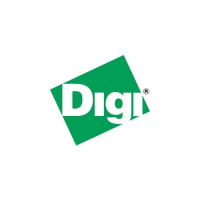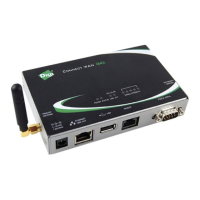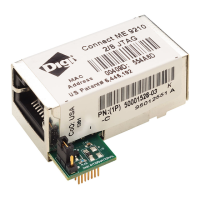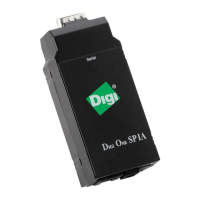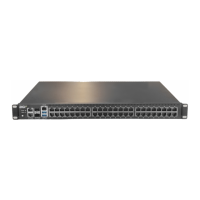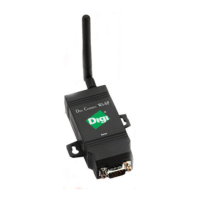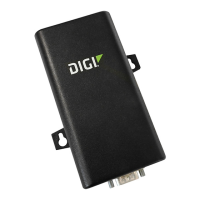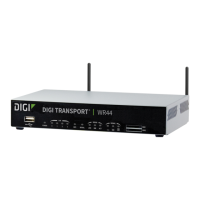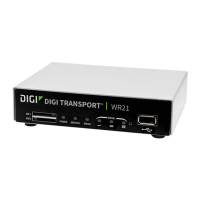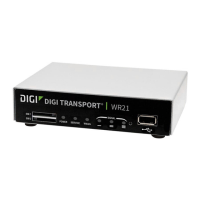Overview: Configuration, monitoring, and administration Remote Command Interface (RCI)
Digi Connect Family and ConnectPort TSFamily
40
Thecommand-line interface provides flexibility for making precise changes to device configuration
settings and operation. It requiresyou to have experience issuing commands and access to command
documentation.
You can accessthe command linethrough telnet or SSH TCP/IPconnectionsor through a serial port
using terminal emulation software such as Hyperterminal. Accessto the command linefrom serial
ports depends on the port profile in use by the port. By default, serial port command-line accessis
allowed.
See Configure and manage thedevice using the Digi Connect and ConnectPort TSFamily command
line interface for more information on thisinterface. See the Digi Connect®Family Command Reference
on www.digi.com for command descriptionsand examples of entering configuration commandsfrom
the command-lineinterface. In addition, you can access online help for the commandsby issuing the
help and ?commands.
Remote Command Interface (RCI)
TheRemote Command Interface (RCI) isa programmatic interface for configuring and controlling Digi
devices. RCI isan XML-based request/response protocol that allowsa caller to query and modify
device configurations, accessstatistics, reboot the device, and reset the device to factory defaults.
Unlike other configuration interfaces that aredesigned for a user, such asthe command-line or web
interfaces, a program can use RCI. RCI accessconsists of program calls. For example, a custom
application running on a computer that monitorsand controlsan installation of many Digi devices.
You can use RCI to create a custom configuration user interface, or utilitiesthat configure or initialize
devices through external programs or scripts.
RCI uses HTTP as the underlying transport protocol. Depending on the network configuration, use of
HTTPas a transport protocol could be blocked by somefirewalls.
RCI isquite complex to use, requiring users to phrase configuration requests in Extensible Markup
Language (XML) format. It isa “power-user” option, intended for users who develop their own user
interfaces, or implement embedded control (and thuspotentially using RCI over serial) than for end-
users with limited knowledge of device programming.
Not all actionsin theweb interfacehave direct equivalents in RCI.
For more detailson RCI, see the Digi Connect Integration Kit and the Remote Command Interface (RCI)
Specification.
SNMP
UseSNMPto manage and monitor network devices. SNMParchitecture allowsyou to:
n
Manage nodeson an IPnetwork, including servers, workstations, routers, switchesand hubs
n
Manage network performance, find and solvenetwork problems, and plan for network growth
SNMPis easy to implement in extensive networks. You can program new variables and drop in new
devices in a network. SNMPis widely used. It isa standard interface that integrateswell with network
management stationsin an enterprise environment.
However, because device communication isUDP-based, the communication isnot secure. If you
require more securecommunicationswith a device, use an alternate device interface. SNMPdoes not
allow you to perform certain tasksfrom the web interface, such as file management, uploading
firmware, or backing up and restoring configurations. Compared to the web or command-line
interfaces, SNMPislimited in itsability to set specific parameters, such asset port profile, isnot
possible.
Accessing the SNMPinterface requiresa tool, such asa network management station. The
management station relies on an agent at a device to retrieve or update the information at the device,
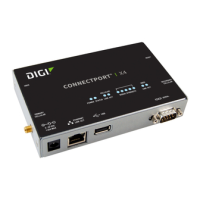
